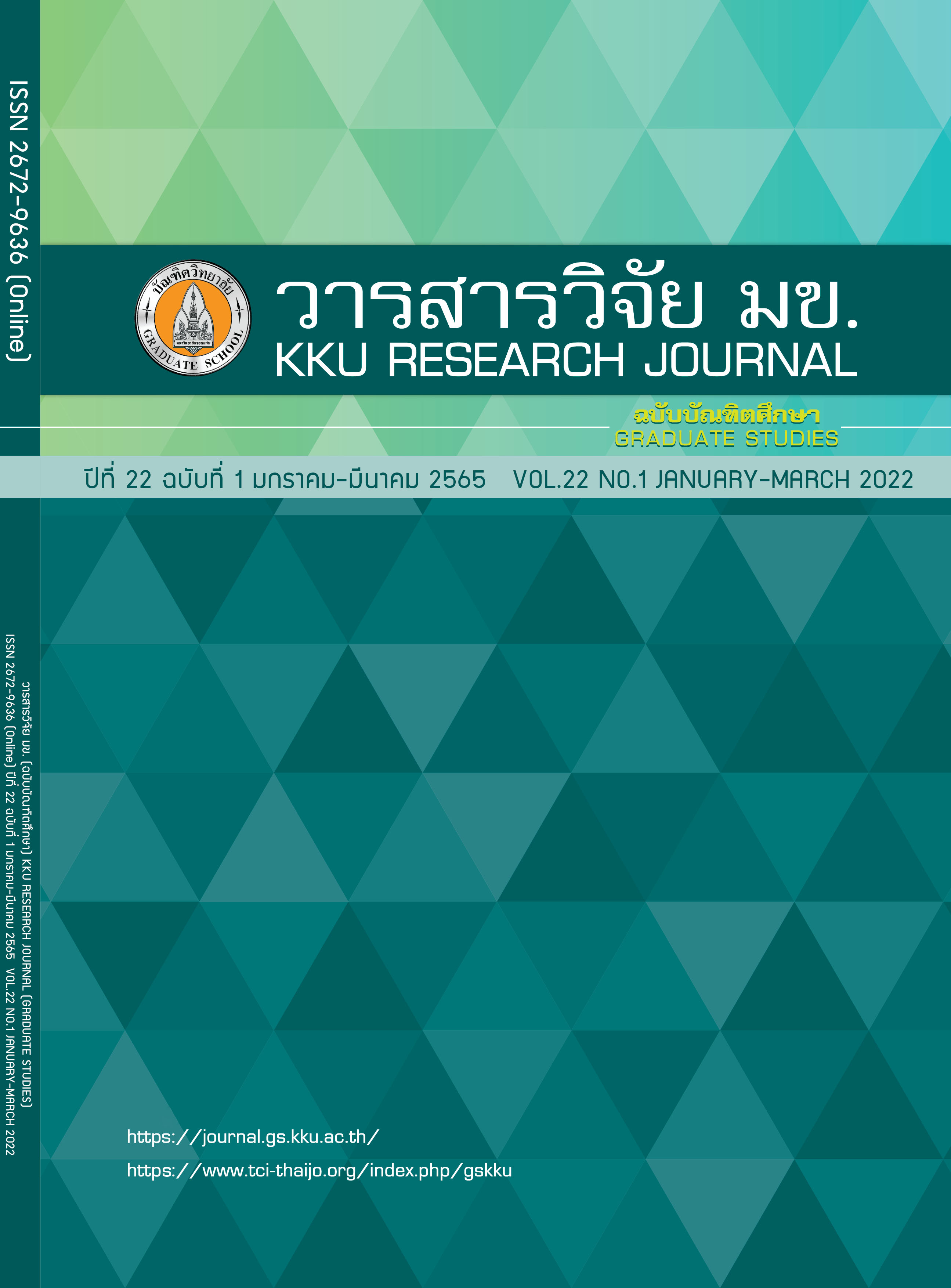Smart Conductive Hydrogel Based on Carboxymethyl Cellulose/Polyvinyl Alcohol/Glycerol Crosslinked by Borax Acid
Keywords:
Hydrogel, Anti-freezing, Self-healingAbstract
Conductive hydrogel is an important material that has been applied as bioactuators and health recording electrodes. The using of conductive hydrogel still has limitations. The loss of water in hydrogel at operating temperature decreases hydrogel properties. To overcome this obstacle, this study aims to develop smart conductive hydrogel with self-healing, anti-freezing, anti-drying. The conductive hydrogel can be prepared based on carboxymethyl cellulose (CMC)/ polyvinyl alcohol (PVA)/glycerol (GA) crosslinked by various borax acid content at 0-25 wt%. Based on the results, the conductive hydrogel containing 5-25 wt% showed relative resistance at 15-20 %. The relative resistance decreased with increasing borax acid in samples. The dissolved borax acid in hydrogel created borate ions which acted as electrolyte in hydrogel. The self-healing ability were observed at 30-360 minutes. The time for self-healing decreased with increasing borax acid content. The reversible linkage between borate ion and hydroxyl groups of CMC/PVA/GA resulting in self-healable phenomenon. The tests of anti-drying were performed at 30oC, for 7 days. The weight loss of PVA/CMC was 80% whereas PVA/CMC/GA was 5%. The GA in hydrogel acted as cryoprotectant which remarkably improve hydrogel stability over 1 week. The obtained conductive hydrogel has potential to apply as strain-sensitive sensors.
References
Wang S, Zhang Q, Tan B, Liu L, Shi L. pH-Sensitive Poly(Vinyl Alcohol)/Sodium Carboxymethylcellulose Hydrogel Beads for Drug Delivery. Journal of Macromolecular Science, Part B. 2011; 50(12): 2307–2317.
Pan X, et al. Multifunctional smart hydrogels: Potential in tissue engineering and cancer therapy. Journal of Macromolecular Science, Part B.2019; 6(4) : 105–121.
Islam A,Yasin T. Controlled delivery of drug from pH sensitive chitosan/poly (vinyl alcohol) blend. Journal of Carbohydrate Polymer.2012; 88(3) : 1055–1060.
Zhang K, Quyet Van Le. A review of polyvinyl alcoholcarboxymethyl cellulose (PVA/CMC) composites for various applications. Journal of Composites and Compounds.2019; 2 : 10–17.
Diani J, Gall K. Absorbent Polyvinyl Alcohol–Sodium Carboxymethyl Cellulose Hydrogels for Propolis Delivery in Wound Healing Applications. Society of Plastics Engineers.2006; 1–10.
Xiao C, et al. Preparation and Properties of Physically Crosslinked Sodium CarboxymethylcellulosePoly(vinyl alcohol) Complex Hydrogels. Journal of Applied Polymer Science. 2010; 116(5) 2658-2667.
Xi Yang Q, et al. A facile approach for polymer hydrogels with enhanced strength, selfhealing and multiresponsive shape memory properties. Materials Research Express.2007; 115(4) 18-23.
Liu H, Zhao W, Gao G, Ren X. Tough, anti-freezing and non-drying double network organohydrogels. Materials Today Communications.2019 ; 21 1-11.
Chen M, et al. Anti-freezing flexible aqueous Zn-MnO2 batteries working at -35 °c enabled by a borax-crosslinked polyvinyl alcohol/glycerol gel electrolyte. Journal of Materials Chemistry A. 2020; 8(14) 6828–6841.
Chen F, et al. Rational Fabrication of Anti-Freezing, Non-Drying Tough Organohydrogels by One-Pot Solvent Displacement.Angewandte Chemie International Edition.2018 ; 57(22) 6568–6571.
Spoljaric S, Salminen A, Luong D, Seppälä J. self-healing hydrogels from nanofibrillated cellulose, poly(vinyl alcohol) and borax via reversible crosslinking. European Polymer Journal.2014 ; 56(1) 105–117.
Qin Y, Wang J, Qiu C, Xu X, Jin Z. A Dual Cross-Linked Strategy to Construct Moldable Hydrogels with High Stretchability, Good Self-Recovery, and Self-Healing Capability. Journal of Agricultural and Food Chemistry.2019 ; 67(14) 3966–3980.
Pan X, et al. Ultraflexible Self-Healing Guar Gum-Glycerol Hydrogel. ACS Biomaterials Science & Engineering. 2016 ; 4 109983.
Zhang J, et al. Highly Stretchable and Self-Healable MXene/Polyvinyl Alcohol Hydrogel Electrode for Wearable Capacitive Electronic Skin. Advanced Electronic Materials.2019 5(7) .
Downloads
Published
Issue
Section
License
Copyright (c) 2022 KKU Research Journal (Graduate Studies)

This work is licensed under a Creative Commons Attribution-NonCommercial-NoDerivatives 4.0 International License.



